The 100 best Apple products ever
From the iPhone to the Apple II: The best gadgets and innovations, ranked.
70. AirPlay (2010)
Technically, AirPlay was released in 2004 under the AirTunes moniker, but no matter what you call it the technology was way ahead of its time. It allows the sending and receiving of commands and media between Apple devices and can enhance your home entertainment.
69. iPod 4th gen (2004)
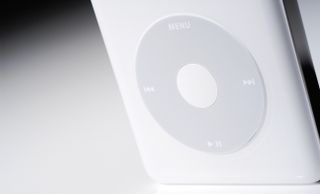
This brought in the click wheel from the iPod mini and USB charging, but it was the associated model with a colour screen and photo viewing that made the product feel like a genuine move up from previous models. The iPod was suddenly not just about music.
68. Mac OS X Snow Leopard (2009)
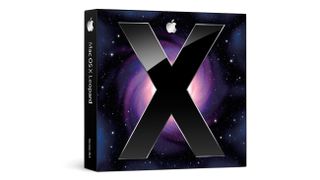
Snow Leopard was an unusual release for Apple back in 2009 because it was designed to bring greater efficiency to Mac OS X rather than add new features. It didn’t support PowerPC processors, which was a major signal that Apple was ready to look to the future, but support for PowerPC-only apps was still included. The improved performance philosophy has continued in macOS ever since.
67. TextEdit (1996)
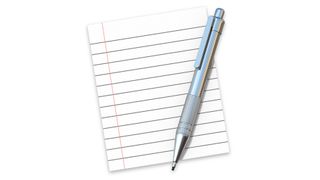
For many, TextEdit is an old-fashioned app that sits on a Mac doing little. For the rest of us its simplicity is what makes it so useful. It can read a variety of file types and is favoured by coders who want the purest of forms for their content.
66. GarageBand (2004)
For music and podcast creation GarageBand is hard to beat. Crucially, it is designed for real musicians as well as those who want to DJ or create electronic music and this is why it has remained so versatile and popular. It is also completely free and has been regularly updated by Apple for many years.
65. Apple EarPods (2012)
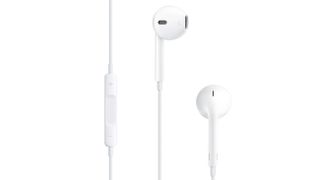
The EarPods were marketed as designed to fit almost any ear and by and large that proved to be true. At a good price and with a classic Apple appearance they sell in huge numbers and the unobtrusive microphone and playback controls sit quietly waiting to be used. A true Apple design classic.
64. Apple Mighty Mouse (2005)
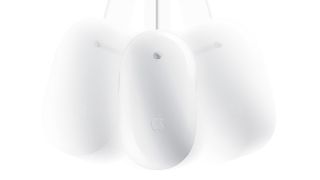
Though this gadget divides many Apple users, it was nevertheless a significant breakthrough being the first Apple mouse to use two buttons instead of one. It also included a miniature trackball.
Get the Creative Bloq Newsletter
Daily design news, reviews, how-tos and more, as picked by the editors.
63. PowerBook G3 ‘Pismo’ (2000)
The fourth generation PowerBook G3 really ramped up the pace with CPU speeds of up to 500MHz and featured plenty of welcome updates, such as a 2x DVD-ROM drive and a new Firewire interface.
62. MacBook Pro with Touch Bar 4th gen (2016)
With lots of power, a great screen and keyboard, the Touch Bar was Apple’s only practical way to enhance the MacBook Pro, adding an innovative navigation feature with plenty of benefits.
61. Macintosh LC (1990)
The unique design of the LC shows that aesthetics have always been a part of Apple’s DNA. The LC was designed to appeal to schools and those looking for computing at a reasonable price.
60. Macintosh Portable (1991)
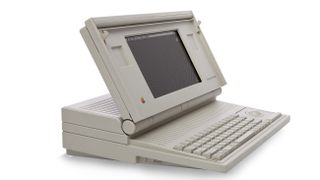
The Macintosh Portable is a hugely important product in the history of computing and despite its short lifespan it is remembered for all of the right reasons. In 1991 a backlit version was released with a new screen and, amazingly because of this change, half the battery life the predecessor offered. The specifications appear laughable today (16MHz processor, just 1MB of RAM and a 40MB hard drive), although at the time it truly was a first and one that gave a glimpse of a possible computing future that would surely never come, but it did.
The ‘Portable’ name also offers a sense of early computing when you consider that this computer was 16 pounds in weight and four inches thick. A good example of how Apple has been there pushing boundaries right from the very start.
59. Power Macintosh G5 dual-core (2005)
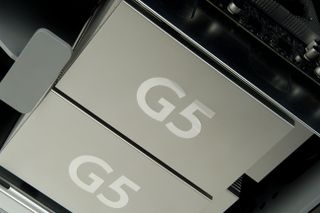
Moving to dual-core processors in the G5 line of Power Macs made for a huge bump in performance and continued to ensure the reputation of the G5 as one that could cater for pretty much every demanding task thrown at it.
58. Mac mini Core Duo (2006)
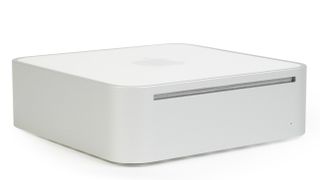
Back in 2006 the release of a Mac mini that offered a 1.83GHz (T2400) Intel Core Duo processor was impressive. Throw in 80GB of storage, 512MB RAM and multiple ports and you had a device that could do almost anything.
57. Power Mac G4 Graphite (1999)
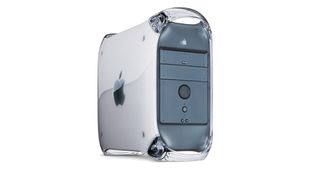
With specs that had previously been marketed to professionals, the Power Mac G4 offered a gateway into the world of true computing for everyone thanks to the 10GB hard drive, 400MHz processor and up to 1GB of RAM. In graphite it looked ace too.
56. iPad mini 5th gen (2019)
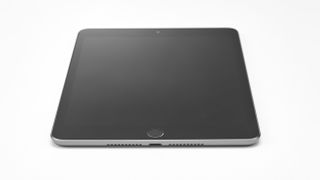
Now with Apple’s A12 Bionic chip inside, the latest iPad mini is three times faster than its predecessor, features a gorgeous True Tone display (which allows the LCD to adapt to ambient lighting) and supports Apple Pencil (1st gen).
55. AirPods 2nd gen (2019)
The second wave of AirPods include an H1 processor that supports hands-free 'Hey Siri', Bluetooth 5 connectivity, faster device connection times and more talk time. The optional Wireless Charging Case also works with Qi chargers.
54. Magic Trackpad (2010)
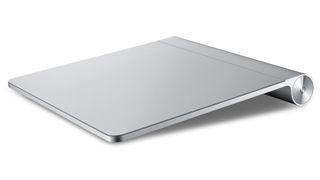
For many people the Magic Trackpad is the perfect solution. It replaces a mouse, it looks fantastic and design-wise it adds symmetry to any desk. If you take the time to understand it and get used to the way it works you may never use a mouse again.
53. AirPort Time Capsule (2008)
The promise of full automatic backups without the need to physically connect another device to your computer makes the price of admission worthwhile, despite the advent of iCloud.
52. iPhone X (2017)
Apple’s first bezel-less iPhone brought many firsts to the mobile party. Face ID was a major inclusion alongside animated emojis and the omission of the legendary Home button.
51. Newton eMate 300 (1997)
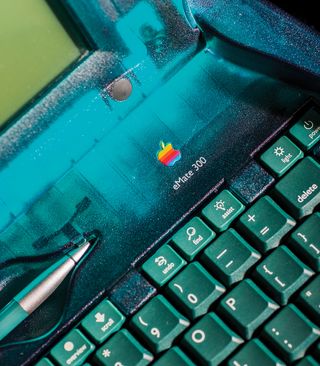
Part PDA and part laptop, the eMate 300 gave students a new kind of device to work with and one that offered up to 28 hours of battery power from one charge. Also, the keyboard was close to being full-sized and the machine was quick due to the relatively low specification.
The memory expansion slot was useful for beefing up storage and the 6.8" screen was perhaps the only drawback of a relatively large device. With a design that is completely unique in the computing world it divides opinion, but there are elements that show where Apple was likely to head all those decades ago and there is a personality in the form that makes it truly a one-off creation. Ultimately it did not succeed for a variety of reasons, but we have to admire the fact that Apple even attempted it.
50. Apple Cinema Display (2004)
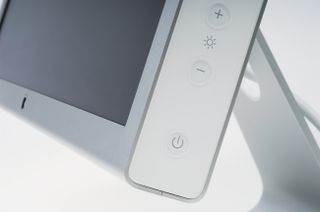
The Cinema Display brought a 30” screen to the party alongside an aluminium enclosure that worked better aesthetically with the computers it was designed to supplement. It is sorely missed with the iMac considered the replacement.
49. Power Macintosh G5 (2003)
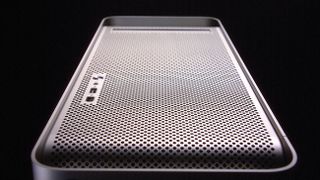
Apple could boast that the Power Mac G5 was the world’s first 64-bit desktop computer. Every spec was designed to cater for those who needed serious power to do serious things and the anodised aluminium structure made for not only a strong device, but one that looked amazing. With seemingly limitless expansion options, it truly was a darling of professional Apple users everywhere.
48. AirPort 802.11b ‘Graphite’ (1999)
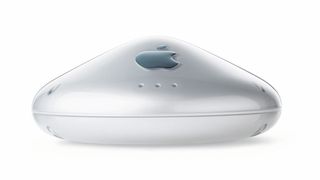
The Graphite base station showed the world that wireless connectivity could be possible and indeed could be a pleasing experience. With a space-age design housing an ethernet port and a dial-up modem, it put Apple firmly in the lead in this sector of the market. The AirPort name has stuck ever since.
47. iPod Nano 1st gen (2005)
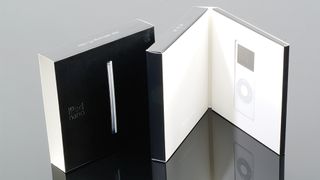
As the name suggests, the Nano was all about size and true portability. The small colour screen made 14 hours of battery life possible and it could hold hundreds of tracks despite its tiny form. It took on many forms over the years, but the original click wheel model remains a firm favourite among Apple fans.
46. iBooks Author (2012)
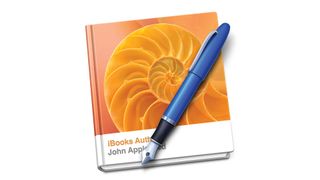
Alongside more series design apps, iBooks Author seems very basic – but that’s kind of the point. The purpose of this free Mac app is to provide tools for anyone to create their own ebooks and distribute them through the store.
45. MacBook Pro (2006)
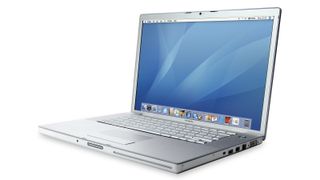
The Pro version of the MacBook has become the default option for creatives who need raw power in a portable form. The original was powered by Intel chips, had multiple ports and paved the way for the powerhouses of today.
44. Power Mac G4 Cube (2000)

Nearly 20 years on and the design still looks amazing. The Cube was suspended within a larger cube that was clear and the specs were competitive at the time. Sadly it was not competitively priced against other Apple computers, some of which included monitors, which meant its lifespan was short. If we look back at the design today, however, we see a Mac that was hugely ambitious in the right ways.
43. Find My iPhone (2013)
Since launching with iOS 5, this app has proved essential for finding misplaced Apple tech. It allows remote location tracking of iOS devices, Macs, Watches and AirPods and now works through iCloud so you can start finding them through any computer.
42. Mac Pro (2008)

The Mac Pro from 2008 was a beast of a product with two 2.8GHz processors, 2GB of RAM, 320GB hard drive and the ability to expand it as you needed. The design was quite stark to say the least and it took a very long time for Apple to get round to replacing it.
41. Aluminium PowerBook G4 (2003)

Apple’s love for aluminium is well known and the PowerBook G4 emphasised the skill that was used to develop this product perfectly. Only Mac OS X could be run on it, but the end result was a laptop with a superb keyboard and a design that would fit in any environment.
Next page: Best Apple products 40-21

Thank you for reading 5 articles this month* Join now for unlimited access
Enjoy your first month for just £1 / $1 / €1
*Read 5 free articles per month without a subscription

Join now for unlimited access
Try first month for just £1 / $1 / €1
Current page: The best Apple products: 70-41
Prev Page The best Apple products: 100-81 Next Page The best Apple products: 40-21